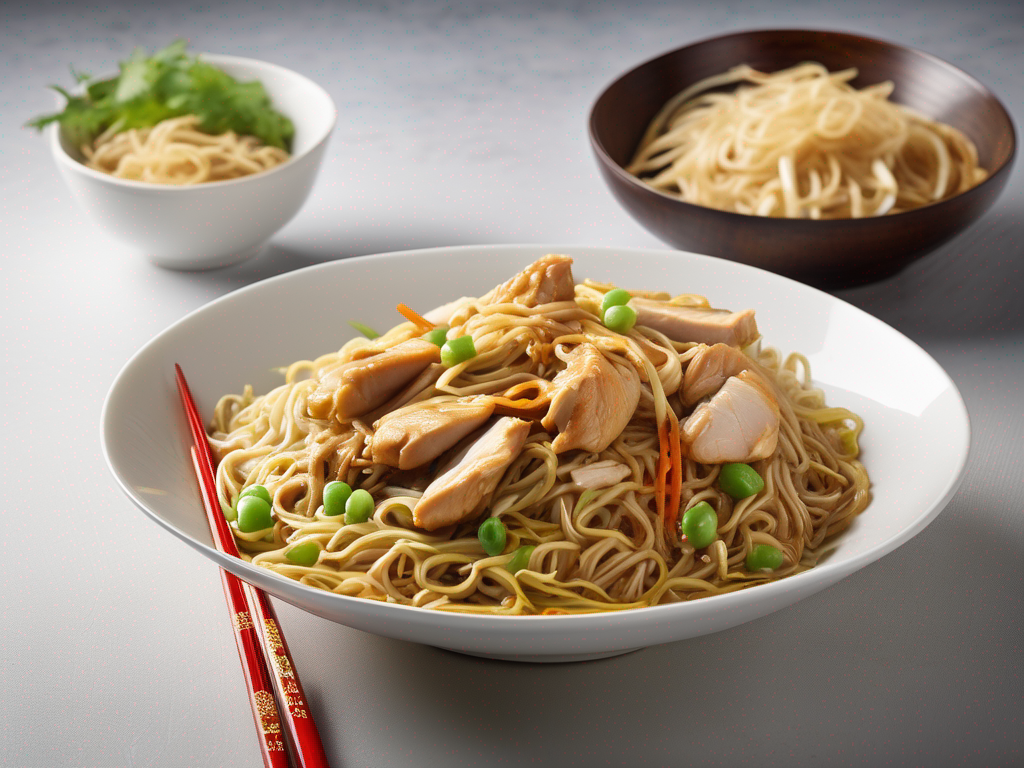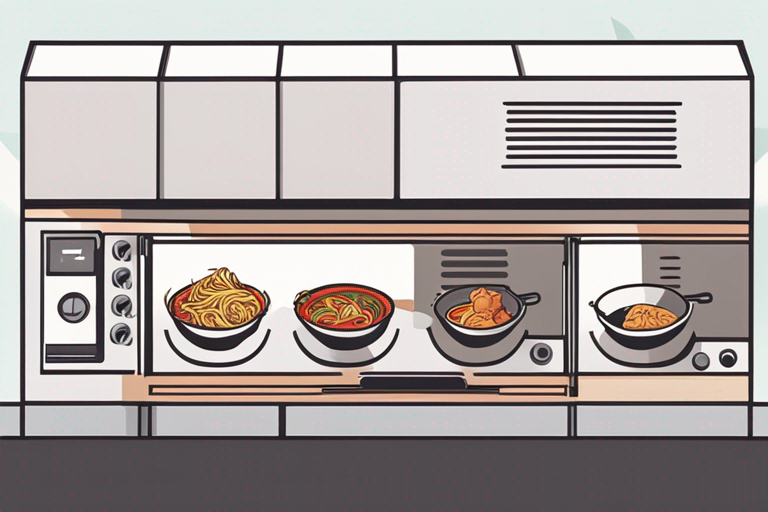
Is It Safe to Reheat Chicken Chow Mein Multiple Times?
Get Your Free Food Safety Cheat Sheet
30 most common foods with instant answers. Print it and stick it on your fridge—completely free!
Is It Safe to Reheat Chicken Chow Mein Multiple Times?
When it comes to reheating leftovers, especially dishes like Chicken Chow Mein, it's essential to consider food safety to avoid any potential risks. Chicken Chow Mein is a popular Chinese dish consisting of stir-fried noodles, vegetables, and chicken. In this blog post, we will explore the safety aspects of reheating Chicken Chow Mein multiple times and provide you with practical tips to ensure your meal remains safe and delicious. (Chicken chow mein)
Understanding Food Safety
Why is Food Safety Important?
Food safety is crucial to prevent foodborne illnesses caused by bacteria, viruses, parasites, or chemical substances present in food. Reheating food properly can help kill harmful bacteria and reduce the risk of foodborne illnesses.
Factors Affecting Food Safety
Several factors can impact the safety of reheated food, including:
- Temperature: Food should be heated to a safe internal temperature to kill bacteria.
- Time: Avoid leaving food at room temperature for extended periods.
- Storage: Properly storing leftovers can prevent bacterial growth.
Reheating Chicken Chow Mein Safely
Guidelines for Reheating Leftovers
When reheating Chicken Chow Mein, follow these guidelines to ensure safety:
- Temperature: Reheat the Chicken Chow Mein to an internal temperature of 165°F (74°C) to kill any bacteria present.
- Time: Consume reheated leftovers within 2 hours to minimize the risk of bacterial growth.
- Storage: Store leftovers in airtight containers in the refrigerator at 40°F (4°C) or below.
Tips for Reheating Chicken Chow Mein
Follow these practical tips to safely reheat Chicken Chow Mein:
- Use a Food Thermometer: Check the internal temperature of the Chicken Chow Mein before consuming.
- Microwave Safely: Stir the Chicken Chow Mein halfway through the reheating process to ensure even heating.
- Avoid Reheating Multiple Times: Limit the number of times you reheat Chicken Chow Mein to maintain food quality and safety.
Risks of Reheating Chicken Chow Mein Multiple Times
Potential Risks
Reheating Chicken Chow Mein multiple times can pose several risks, including:
- Bacterial Growth: Each time you reheat the dish, there is a potential for bacteria to multiply if not reheated properly.
- Texture and Flavor Changes: The quality of the Chicken Chow Mein may deteriorate with each reheating cycle.
Safety Precautions
To minimize risks associated with reheating Chicken Chow Mein multiple times, consider the following precautions:
- Portion Control: Only reheat the amount you plan to consume to avoid leftovers.
- Proper Storage: Store leftovers promptly in the refrigerator to prevent bacterial growth.
Conclusion
In conclusion, reheating Chicken Chow Mein multiple times can be safe if done correctly. By following proper reheating guidelines, using a food thermometer, and storing leftovers properly, you can enjoy your Chicken Chow Mein without compromising your health. Remember to reheat the dish to the recommended internal temperature, consume leftovers within a reasonable timeframe, and exercise caution when reheating multiple times. Prioritize food safety to enjoy delicious and safe meals every time.
For more delicious recipes and food safety tips, check out our [chicken chow mein](/food/chicken chow mein) page. Stay safe and enjoy your meals! (Chicken chow mein)
Related Posts
Here are some other articles you might find helpful:
- What to Do If Your Chicken Chow Mein Smells Off Before Expiration Date
- How to Properly Store Leftover Chicken Chow Mein in the Refrigerator
- The Best Way to Reheat Leftover Chicken Chow Mein
- Is Your Chicken Chow Mein Safe to Eat? A Guide to Identifying Spoiled Food

Authoritative Food Safety References
These agencies and university labs inform every tip and health precaution we publish.
USDA FoodKeeper – Cold Storage Guidelines
Official refrigerator, freezer, and pantry timelines maintained by the U.S. Department of Agriculture.
Visit USDA FoodKeeperFDA Produce Safety Rule & Grower Guidance
Field-to-fridge handling practices that prevent contamination of fruits, vegetables, and leafy greens.
Visit FDA Produce SafetyCDC Foodborne Illness Prevention Hub
Surveillance-backed guidance on pathogens, symptoms, and steps to reduce foodborne illness risk.
Visit CDC Food SafetyUC Davis Postharvest Technology Center
University research detailing optimal storage atmospheres for produce after harvest.
Visit UC Davis PostharvestPenn State Extension – Home Food Preservation & Safety
Peer-reviewed extension bulletins on safe canning, chilling, and reheating practices.
Visit Penn State ExtensionCan I reheat chicken chow mein multiple times?
How should I store leftover chicken chow mein to ensure food safety?
What are the signs that leftover chicken chow mein has gone bad?
Can I freeze leftover chicken chow mein to extend its shelf life?
How can I safely reheat chicken chow mein to ensure it is hot enough to kill bacteria?
Get Your Free Food Safety Cheat Sheet
30 most common foods with instant answers. Print it and stick it on your fridge—completely free! Want more? Upgrade to the complete guide with 70+ foods.
Scan your food directly and get instant safety info using our AI-powered camera feature.